Black kitchens are perfect when you’re looking for a bold, dynamic, and vibrant impact for your home interiors. The black beautifully injects a character in the interiors and brilliantly teams up with other textures, colours and metallics to ensure a truly personalised space. From charcoal black to graphite kitchens, black kitchen ideas are all over the internet, making a roar in the kitchen industry. We at TEL Kitchens, UK’s leading kitchen manufacturing brand, have compiled some of the latest, trending and bestsellers of all time for your black kitchen ideas search.
Inspiring and Fresh Black Kitchen Ideas UK
If you are planning a new kitchen or working on finalizing design for your new kitchen in UK, here’re some trending black kitchen ideas UK that’ll surely inspire you.
1. Warm and Inviting Modern Black Kitchen Ideas
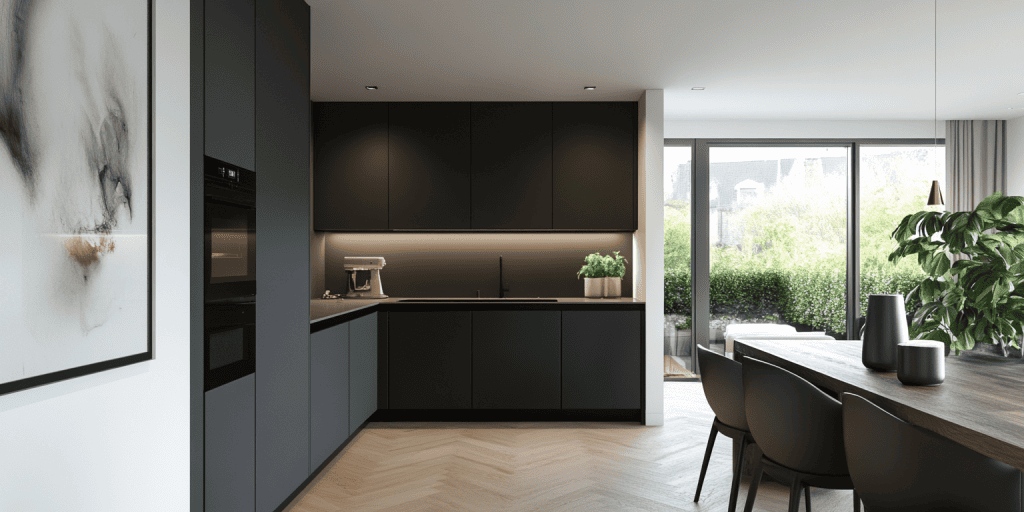
This is one of the best black kitchen ideas that blends matte black finishes with warm undertones, creating an inviting space that feels both modern and homely. The natural lighting softens the bold cabinetry, while the sleekness and clean lines add texture. This design idea proves that black doesn’t have to feel cold. It can radiate comfort and character as well.
2. Corian Worktop Becomes the Showstopper
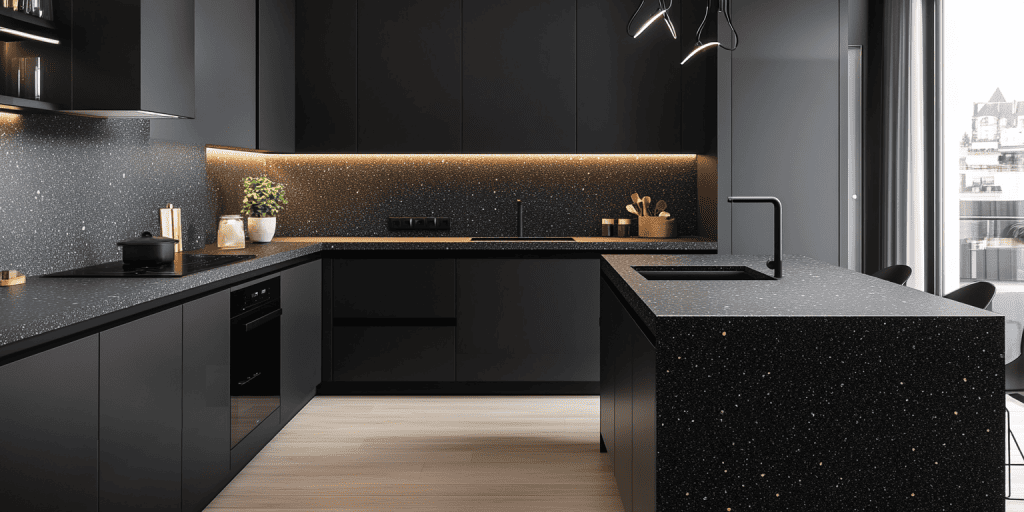
Here in this modern black kitchen idea UK, the deep black cabinetry forms the perfect backdrop for a striking Corian worktop that steals the spotlight. Its smooth, seamless surface adds elegance and durability. The sleek modular layout of the black kitchen ensures practicality and functionality.
3. Pure Black Modular Kitchen Design For that Bold Look
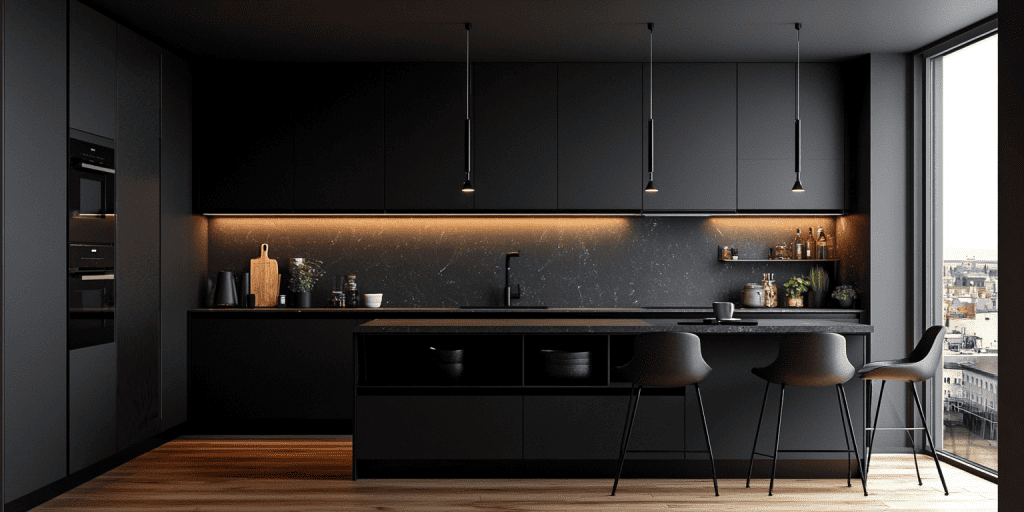
This black kitchen design online takes boldness to the next level with a fully black modular setup. Clean lines, a black island with open shelves and uninterrupted surfaces deliver a seamless look. The design is ideal for those who love dramatic interiors. Rated amongst one of the black kitchen ideas, it’s contemporary yet versatile.
4. Handless Black Kitchen trend That Imbues Luxury
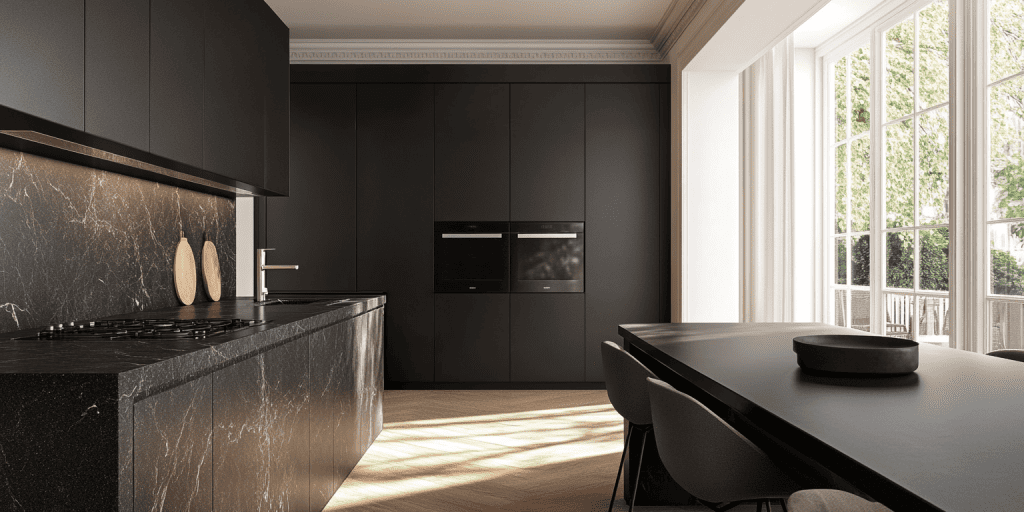
Handleless cabinetry creates an uninterrupted flow, making this black kitchen design UK feel effortlessly sleek. The addition of black stone accents (black marble) in base cabinets and countertops intensifies its luxury appeal. This minimalist approach elevates functionality while embracing modern aesthetics. Thus, such black kitchen designs embody sophistication without compromising on comfort or practicality.
5. Elegant Black Kitchen For Luxe Statement
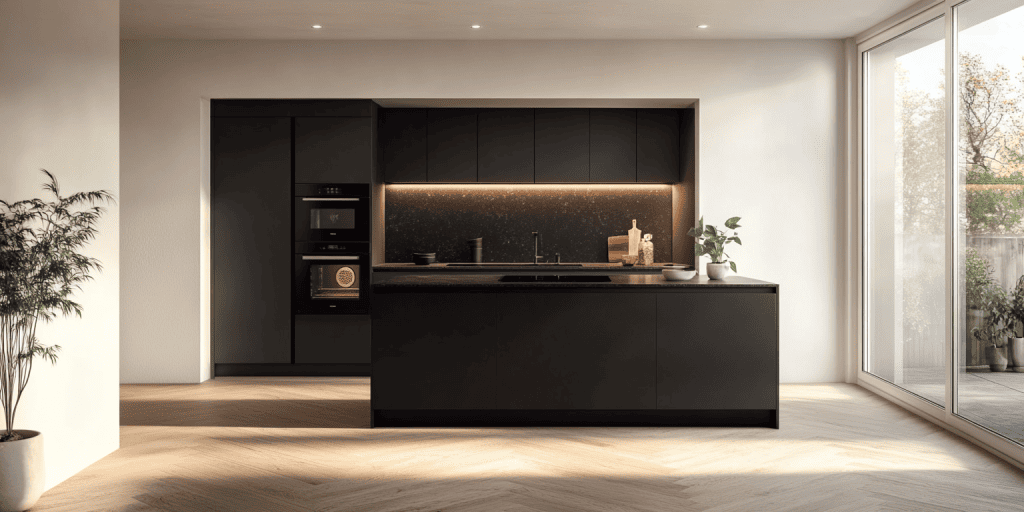
Amid other trending black kitchen ideas UK, this kitchen is exclusively designed to turn heads. This space pairs deep matte cabinetry with refined details for a luxe statement. The seamless surfaces exude elegance, while high-quality finishes ensure durability.
6. High End Black Kitchen with Matt Cabinets
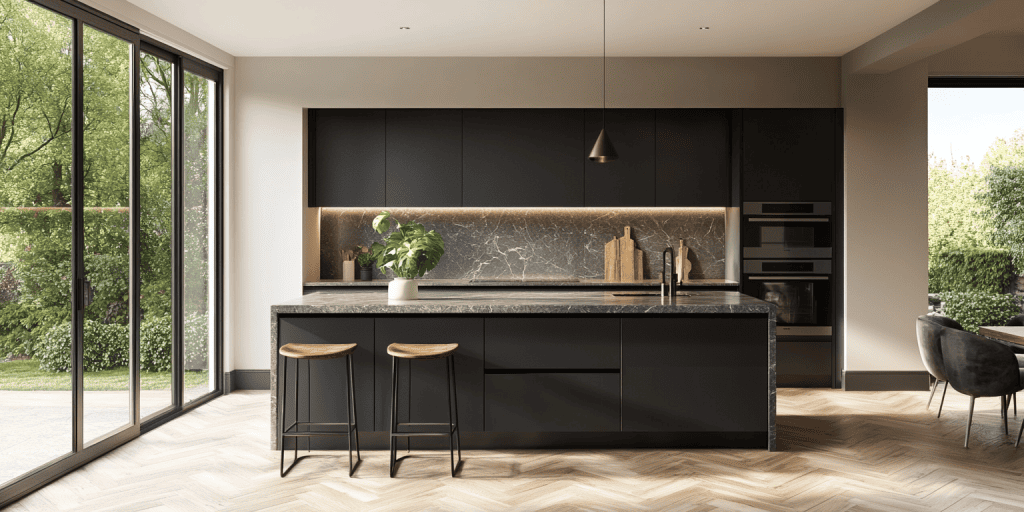
This high-end design highlights matte black cabinets that look chic and resist fingerprints. The subtle contrast of black veined worktop enhances depth, while clever storage keeps the space clutter-free. This black kitchen idea presents a thoughtful balance between visual appeal and practicality.
7. Inviting and Sleek Kitchen in Black Idea
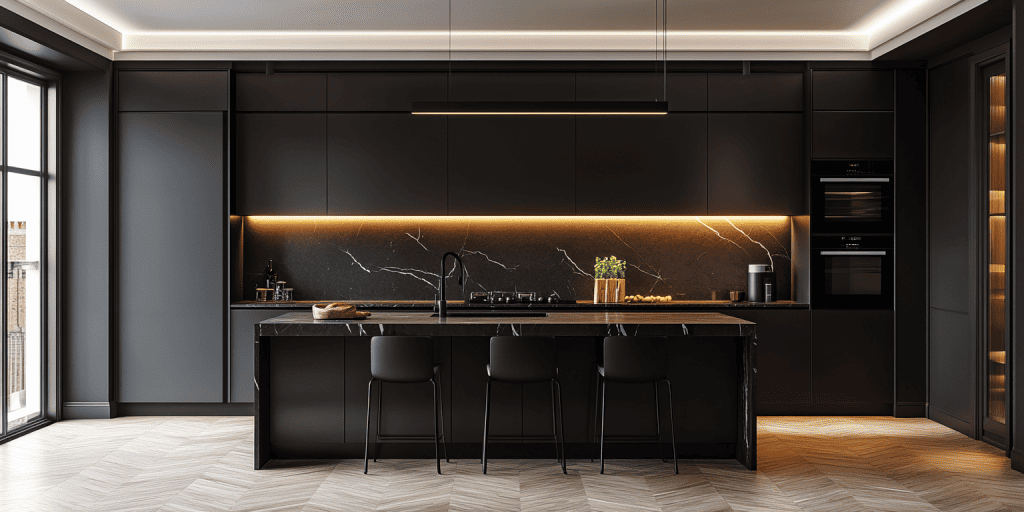
Tall cabinets paired with matte finishes create a sleek yet inviting black kitchen design in wood UK. The layered textures prevent the space from feeling flat, while strategic lighting draws attention to clean lines. All in all, it’s an excellent black kitchen online idea of how a dark colour can look sharp yet approachable when styled thoughtfully.
8. Black European Style Kitchen For a Big Family
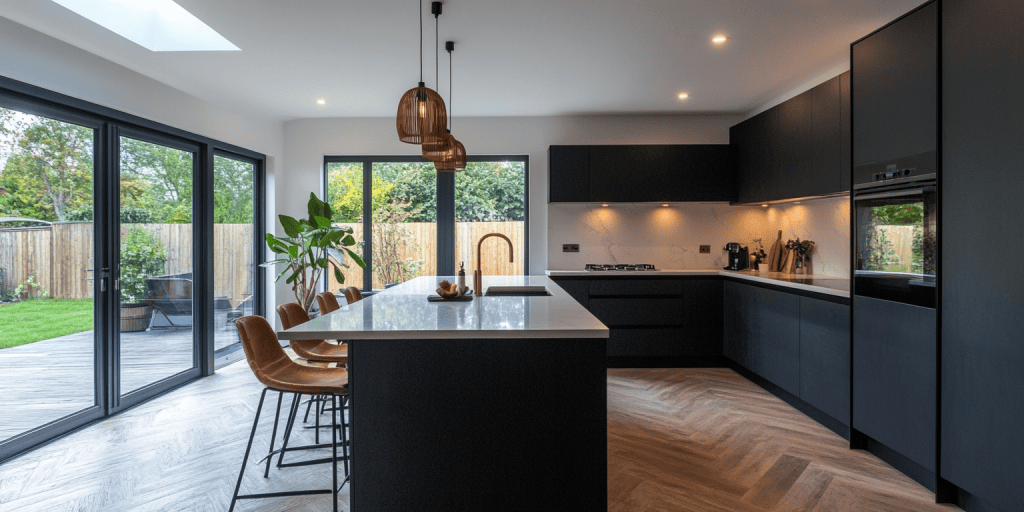
Rated amongst the best German style black kitchen ideas UK, this spacious European-style kitchen uses full matte cabinetry to anchor the design while brushed accents introduce subtle variation. Its generous layout is ideal for large families, offering abundant storage and a central gathering point. The design fuses practicality with elegance, proving black works beautifully in expansive interiors.
9. Black Kitchen with Big Island and White Worktop
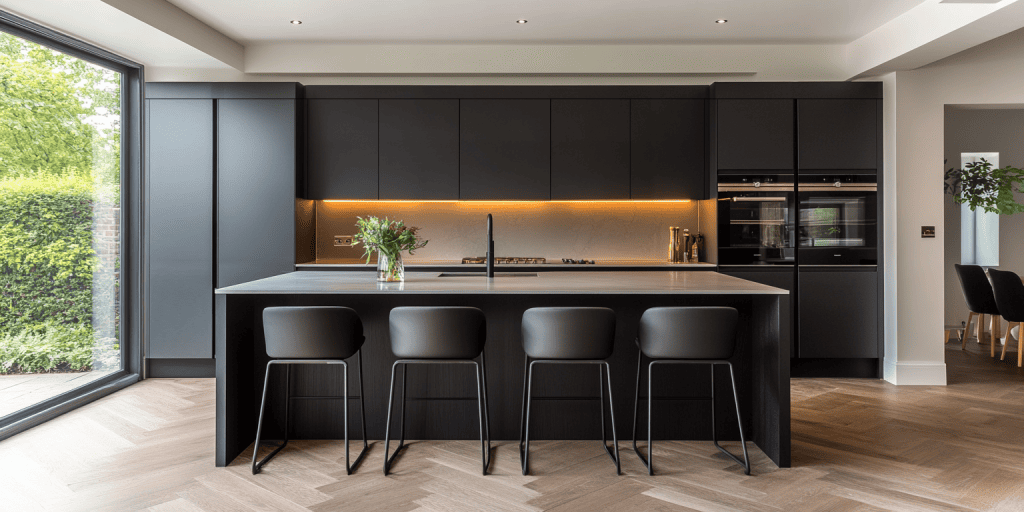
A bold black kitchen in UK is softened with a striking white worktop, delivering a crisp contrast that instantly brightens the space. The oversized island doubles as a statement piece and a functional hub for dining or prep. This design thrives on balance, and the dark drama meets timeless brightness.
10. Black Kitchen with Waterfall Island and Marble Worktop
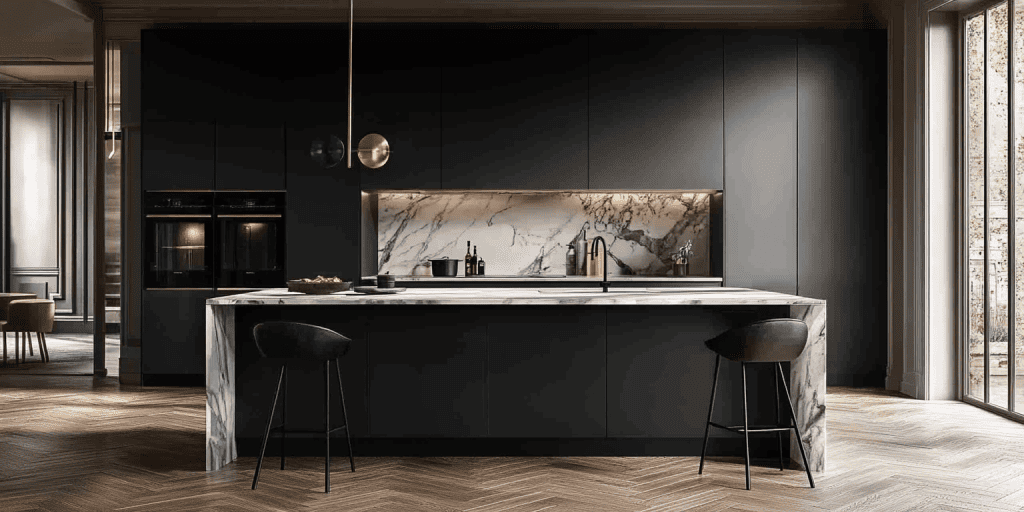
This kitchen in black celebrates drama with a waterfall island wrapped in luxurious marble. The matte black cabinetry acts as the perfect stage for the veined stone centrepiece. The four-chair design that fuses opulence with practicality shows how statement islands can redefine both the look and purpose of a kitchen.
11. L shaped Black Kitchen with Handless Cabinets
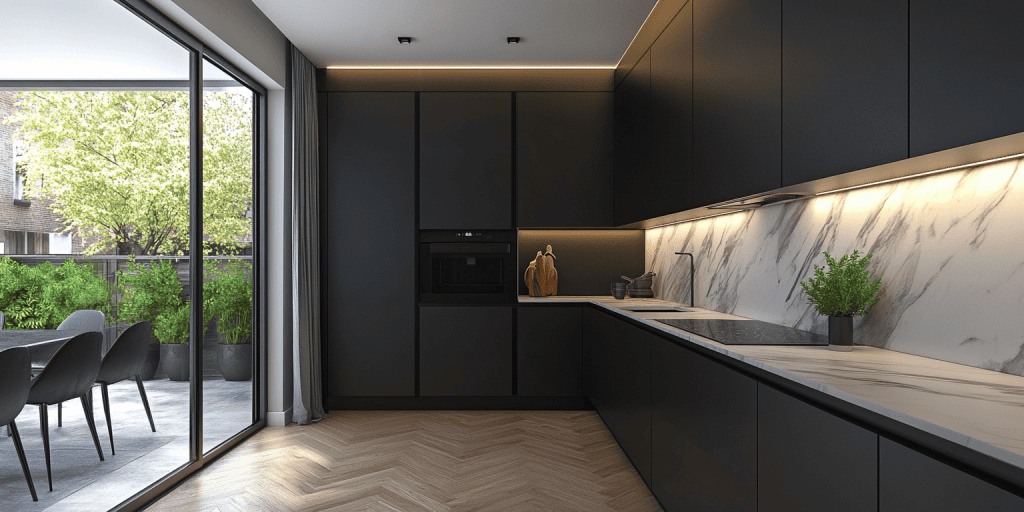
The L-shaped design of this beautiful black themed kitchen maximizes corner space while handleless cabinets ensure a seamless look. Black’s intensity is balanced by clever use of layout and marble countertop in white. Thus, making the kitchen look both practical and stylish. It’s a versatile choice for modern homes, giving homeowners elegance without losing functionality in compact or open spaces.
12. Minimalist Single Wall Black Kitchen Style with Larder Units
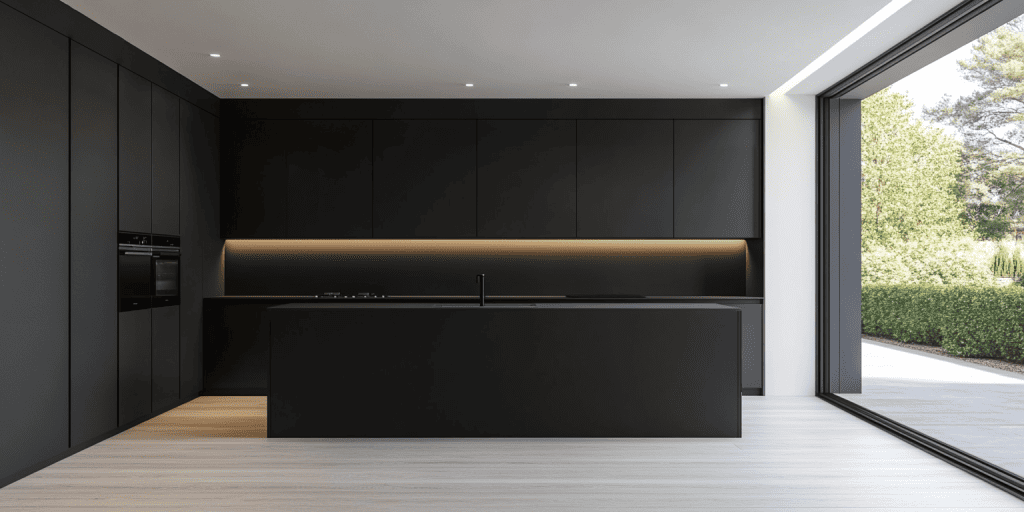
Perfect for apartments or streamlined homes, this single-wall black kitchen delivers maximum efficiency. Sleek larder units provide ample hidden storage, keeping everything organised. Its minimalist design embraces functionality while ensuring the bold aesthetic of black remains intact. Such black kitchen ideas are ideal for those who prefer simplicity with a striking edge.
13. Minimalist Modern Kitchen in All Black Cabinets
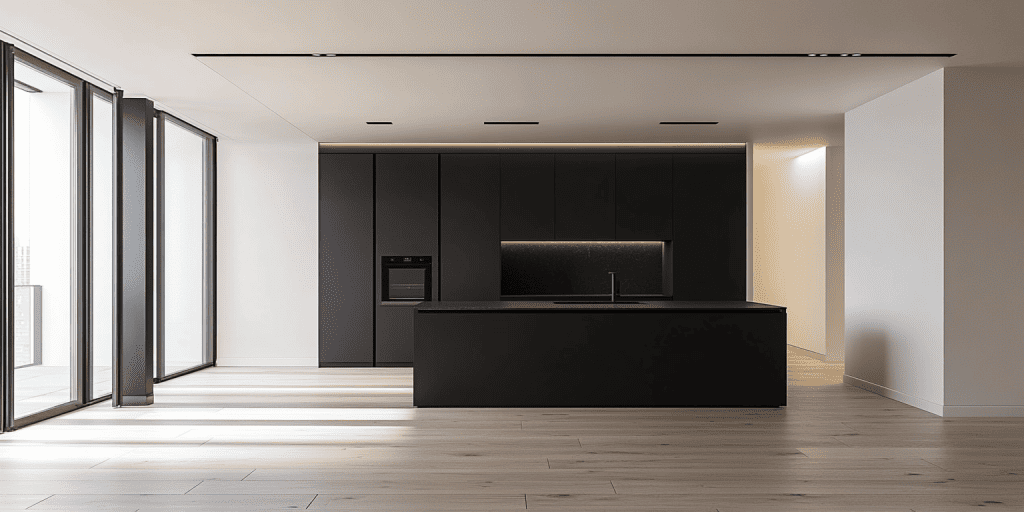
This design strips everything back to basics. Pure black cabinetry and white walls bring out a compelling contrast and thus make it a more loved black kitchen idea. Without distractions, the kitchen becomes a canvas for lighting and textures. It’s bold, modern, and unapologetically simple, showcasing how black alone can create a powerful visual impact without needing extra embellishments.
14. Elegant and Sophisticated Italian Kitchen in Black
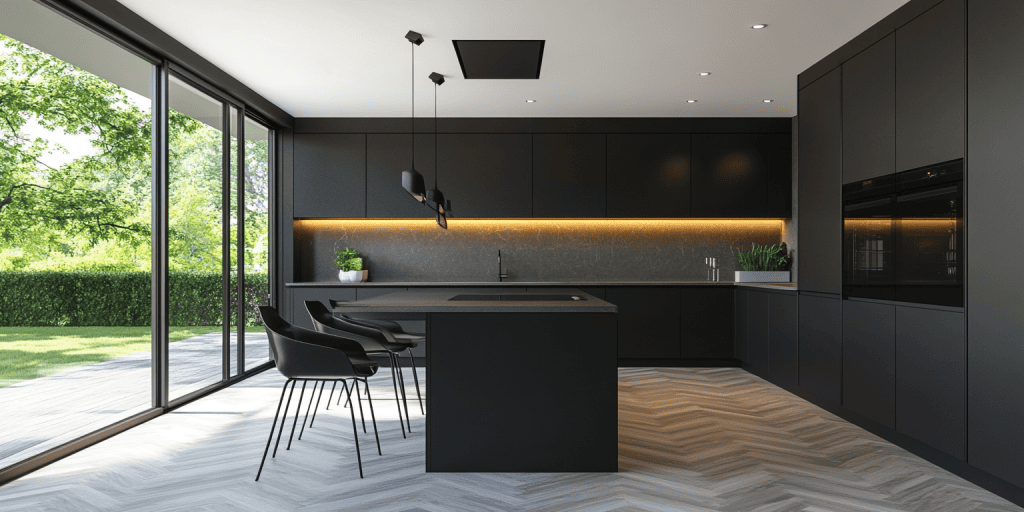
Italian design meets black sophistication in this kitchen. Sleek surfaces, precise lines, and gloss finishes come together to embody craftsmanship and elegance. Built for performance as much as looks, it’s a kitchen that promises durability, efficiency, and timeless beauty. Keep saving the black kitchen ideas UK that you are loving.
15. Lights, Camera and Action With This New Design
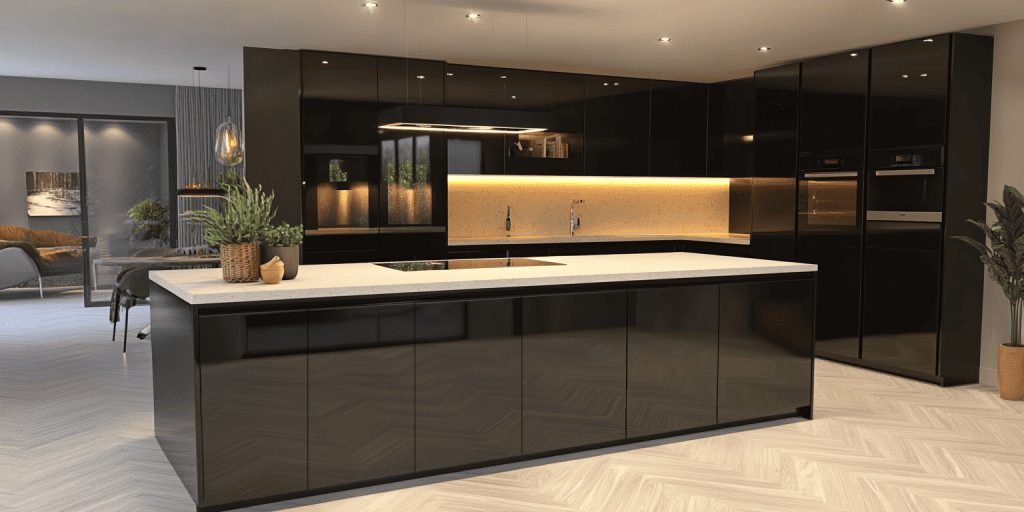
This design thrives under dramatic lighting, which highlights every glossy surface and precise edge. The black cabinetry acts as a cinematic backdrop, perfect for homeowners who want their kitchen to feel like a centrepiece. It’s contemporary, bold, and designed to shine.
16. The Overhead Lights are the New Inspiration
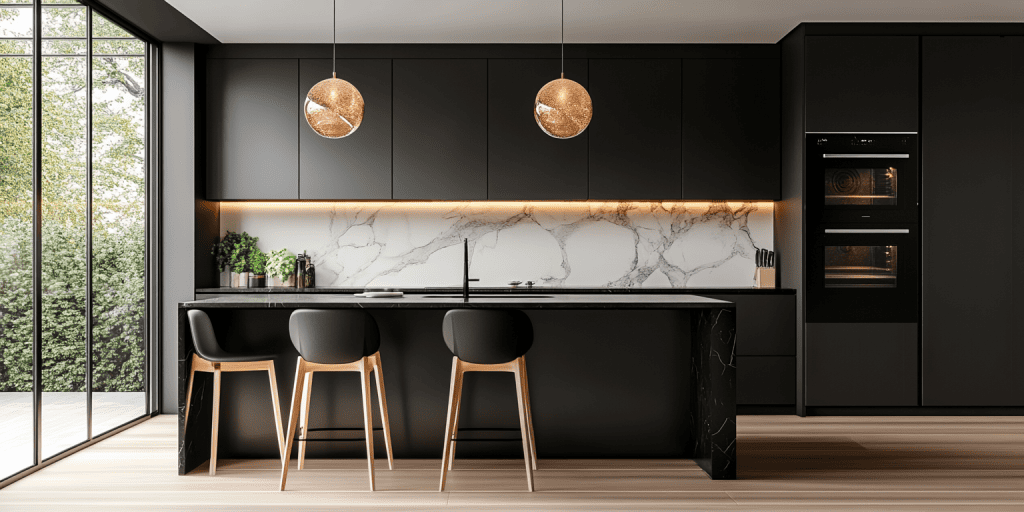
Overhead lighting transforms this matte black kitchen design into a masterpiece. Indeed, this kitchen is best when you are searching for budget or affordable kitchen ideas in UK. Warm illumination softens dark tones, creating an inviting yet modern atmosphere. The tall cabinetry and island design offer both storage and style. Thus, proving that the right lighting can completely redefine how a black kitchen feels and functions.
17. Modern Black Kitchen With Matt Tall Units
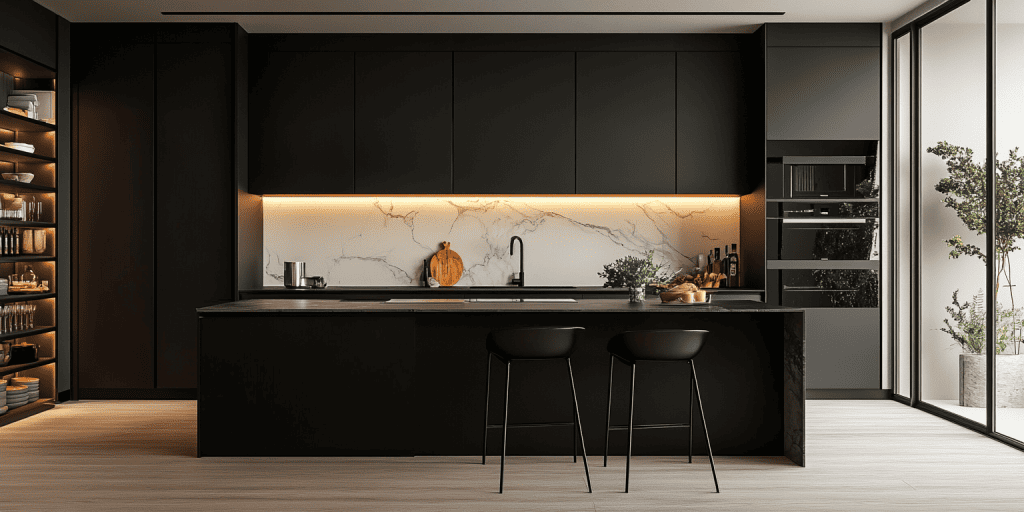
Tall matte black units dominate this design, giving a sleek, contemporary look while maximising storage. Their vertical emphasis and white splashback enhance the sense of height, making the kitchen feel spacious and uncluttered. A design that prioritises both elegance and practicality, it’s perfect for modern families who value order and beauty.
18. Terrazzos are Back in Trend
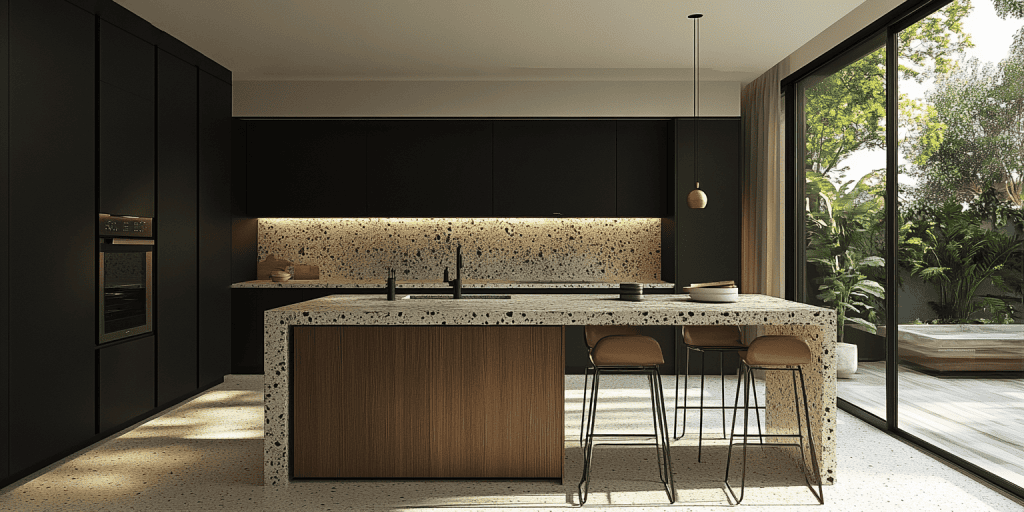
This kitchen embraces terrazzo surfaces alongside black cabinetry, reviving a retro favourite with a modern twist. The speckled textures on countertops and splashback break the monotony of matte finishes, adding energy and playfulness. It’s a design for those who love a nod to tradition while keeping things firmly in today’s design language.
19. Parallel Black Kitchen in Wooden Herringbone Flooring
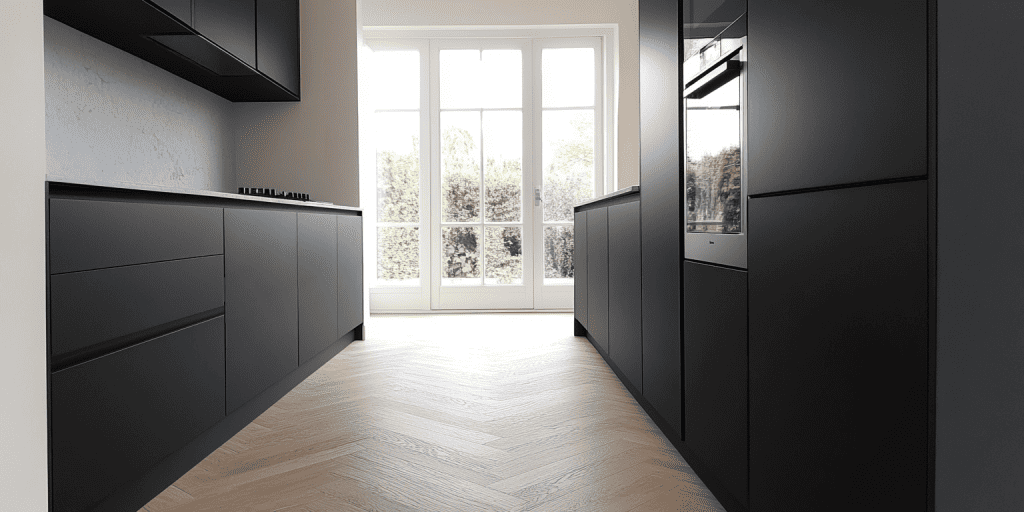
Parallel cabinetry in matte black meets the warmth of herringbone wooden flooring, striking a perfect balance between bold and cozy. The layout maximises efficiency, while the flooring adds timeless character. A great black kitchen is a perfect example of how dark hues can blend seamlessly with natural elements for enduring appeal.
20. Redefining Luxury with this Black Kitchen Idea
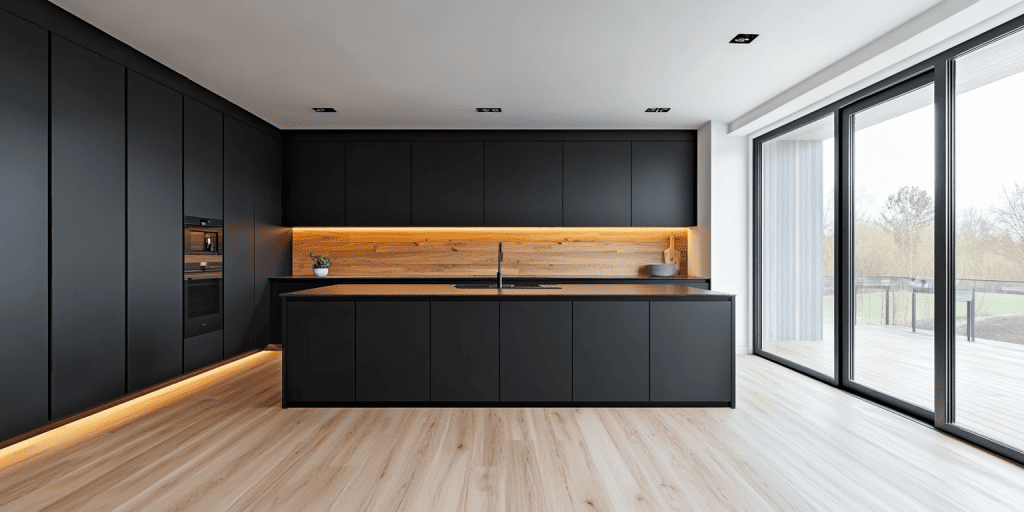
Luxury is redefined here with seamless matte black cabinetry and carefully chosen accents. Every detail feels intentional, from the minimalist lines to the high-quality finishes. It’s a space that celebrates modern elegance while offering everyday practicality. Such black kitchen ideas are designed to impress without losing their functional heart.
21. Full Black Kitchen with Island and recessed Lighting in Yellow
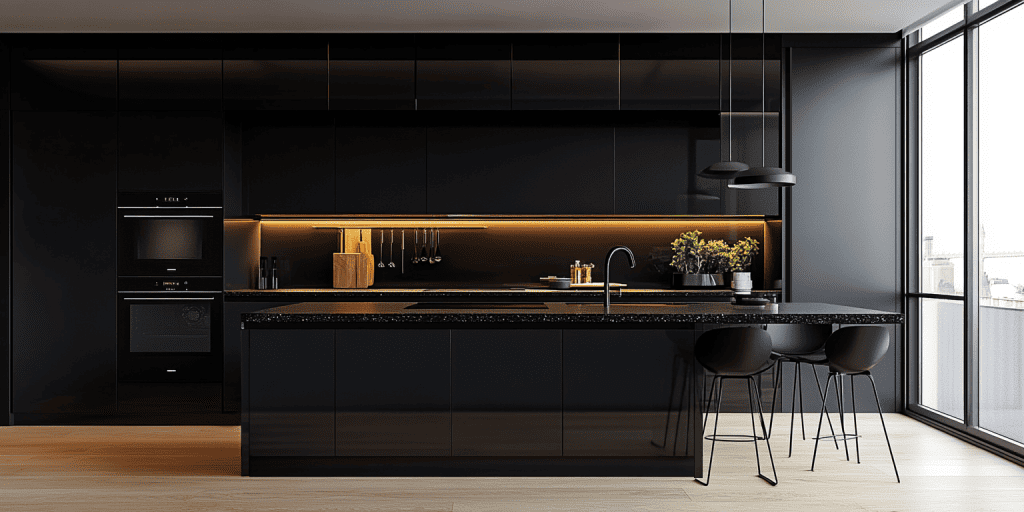
Recessed yellow lighting brings warmth to this full black kitchen design, highlighting its sleek lacquered finishes. The central island enhances functionality while doubling as a bold design statement. This combination of dramatic tones and creative lighting shows how colour can transform the mood of even the darkest interiors.
Conclusion
Hope you’d have loved the black kitchen ideas mentioned above. Want to customise according to your needs? Just share the reference with our team of black kitchen designers. We offer you endless possibilities to style with metallics, glass, or neutral tones for contrast. We’ll help you design, manufacture, and install your black kitchen anywhere in UK. Claim your free quote and free design on booking your kitchen with us.
 19 December 2025
19 December 2025 19 December 2025
19 December 2025 19 December 2025
19 December 2025 19 December 2025
19 December 2025 19 December 2025
19 December 2025
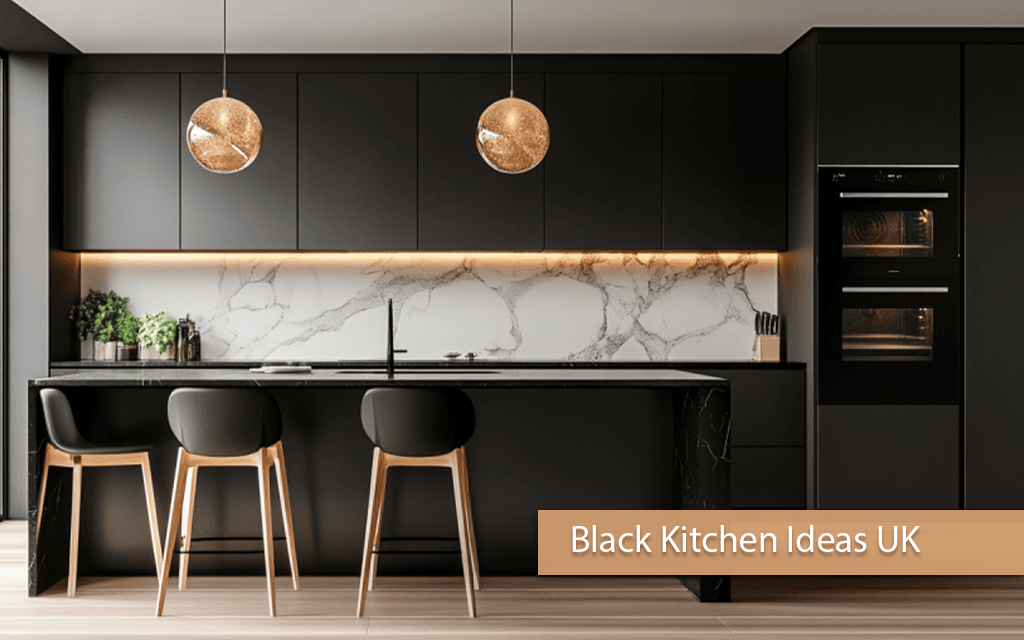





















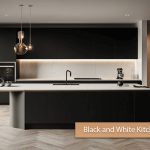
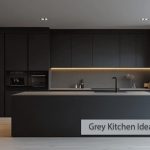
mangat